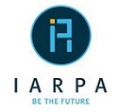IARPA posts Mercury Program funding opportunity
 On June 12, the Intelligence Advanced Projects Research Activity (IARPA) posted a broad agency announcement for the Mercury Program (Solicitation Number: IARPA-BAA-15-08). Proposals for the initial funding round are due no later than 5:00pm Eastern on August 11.
On June 12, the Intelligence Advanced Projects Research Activity (IARPA) posted a broad agency announcement for the Mercury Program (Solicitation Number: IARPA-BAA-15-08). Proposals for the initial funding round are due no later than 5:00pm Eastern on August 11.
IARPA is seeking innovative solutions for the Mercury Program. The goal of the Mercury Program is to develop methods for continuous, automated analysis of foreign SIGINT data in order to anticipate and/or detect significant events. The Mercury Program is envisioned to begin in January 2016 and end in January 2019.
Note: Offeror security information is required by 5:00PM EST, June 18, 2015 for proposals to be considered during the initial round of selection. Please consult the BAA instructions.
Past research has shown that publicly available data can accurately forecast societal events such as civil unrest and disease outbreaks. For example, DOD’s Integrated Crisis Early Warning System (ICEWS) and IARPA’s Open Source Indicators (OSI) have developed methods to forecast societal events using structural data, news feeds, blogs, web search queries, and other publicly available data. However, in many cases, relevant data have significant lag times, lack accuracy, or are classified. There has been little research to examine whether classified data from foreign Signals Intelligence (SIGINT) can be used to forecast events with high accuracy and lead-time.
The Mercury Program aims to fill this gap by developing methods for continuous, automated analysis of foreign SIGINT data to anticipate and/or detect significant events, including military and terrorist activities, political crises, and disease outbreaks in Arabic-speaking countries in the Middle East and North Africa. Performers must address the following technical challenges in order to meet the objectives of Mercury: 3
- Development of methods to automatically sample SIGINT data to detect grouplevel behavior changes in anticipation of, and response to, events of interest.
- Development of SIGINT data extraction techniques that focus on volume, rather than depth, by identifying shallow features of SIGINT data (keywords, geotags, timestamps, etc.) that correlate with group behavior.
- Development of multivariate time-series models robust to non-stationary, heteroscedastic, and heterogeneous data to reveal patterns that precede events.
- Development of innovative uses of statistical methods to fuse combinations of time series for generating probabilistic warnings of events.
- Development of capabilities that account for geographical variations in dialect, communication preferences, rate, technology adoption, and political openness.
Offerors must explain in detail how their approach addresses these technical challenges. Successful approaches will require a combination of innovative research and the capability to develop robust prototypes. The Mercury Program expects a staged approach to prototype development; each successive prototype will leverage research progress made since the previous prototype. Research goals should be set, and research plans should be made, to take full advantage of the length of the Mercury Program.
Full information and instructions are available here.
Source: FedBizOpps
Tags:
metered







